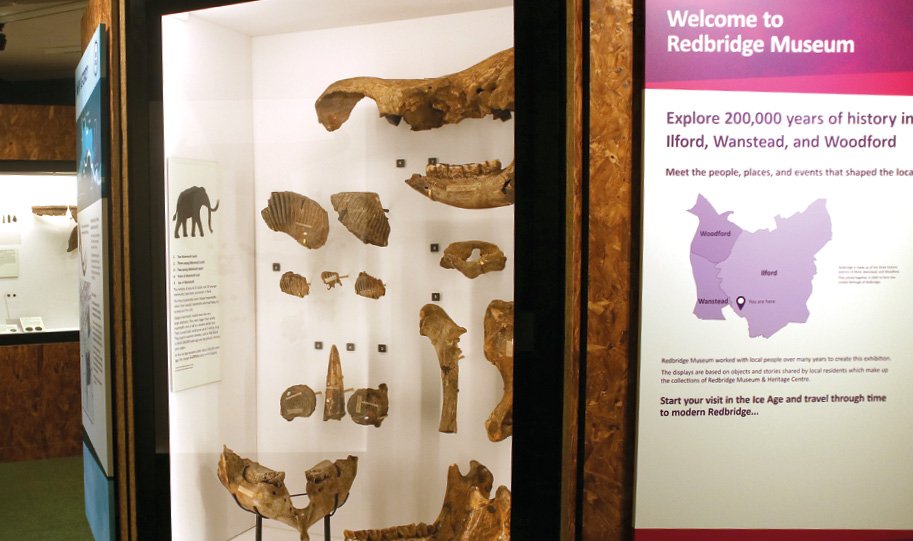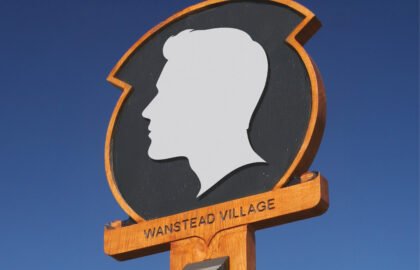Local resident Delia Ray reports on her visit to the recently refurbished Redbridge Museum, which offers an insight into the rich history of Wanstead, Woodford and the wider borough
The skull of a mighty mammoth looms over the stairs as you climb up to the relaunched Redbridge Museum in Ilford. It’s a reminder that thousands of years ago this area was made up of grassy plains where bears, rhinos and mammoths once roamed.
Over 200,000 years later, the skull is one of more than 350 items making up the museum, which brings new perspectives to our borough’s past. I recently visited with my son to discover what the exhibits can tell us about Wanstead and Woodford.
The museum is on the second floor of Redbridge Central Library, and our first challenge was finding it. But once you make your way past the bookshelves and up through the entrance (there’s also a lift), you’ll find a substantial, well-ordered, local museum.
Following the revamp, there’s extra room for hundreds of exhibits. My son was delighted to discover the displays include family-friendly labels, interactive screens and games. I was oddly proud to discover our home ‘patch’ is one of the most important Iron Age sites in Britain. It’s certainly one of the longest inhabited areas of London. South Woodford can even boast a 300,000-year-old hand axe, found at Elmhurst Gardens in 1975. The Roman era comes to life in Wanstead Park, where archaeologists discovered the remains of a villa, replete with mosaic floors.
These exhibits show early settlement, but the majority of Redbridge was farmland for most of its history. The names of local farms still resonate: Churchfields, Nightingale, Aldersbrook. By the 18th century, wealthy merchants were setting up home across Wanstead and Woodford. Many of them were linked to the East India Company, founded in 1600 to bring goods from India, Indonesia and China. Today, Redbridge is a vibrant, multi-ethnic area and the museum does an impressive job of explaining this history and its sensitivities.
It was all change across Redbridge when the railways arrived in the 19th century. This triggered the phenomenal spread of Victorian and Edwardian homes we see today. And as the displays move through wartime and to the present day, there are inevitably many more available objects on show. This left me eager to find out more, for example, about local shops (who knew that Assam House – the parade of shops near Churchfields in South Woodford – was named after the tea sold there, in T Liddle & Sons Grocers, est 1900?).
Overall, this is an inspiring collection, which digs deeply into the strands that make up today’s Redbridge. I recommend the museum to those wanting to find out more about their neighbourhood or even to take a trip down memory lane. There’s plenty for everyone.
Redbridge Museum is located on the second floor of Redbridge Central Library in Ilford (free entry). Visit wnstd.com/rm





